- Your School Type
- Solutions
- Resources
- Blog
- Events
- More
- Contact Us
- Book a Demo
- Get a Quote
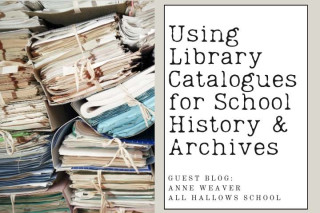
We are excited to share this guest blog written by Anne Weaver, Head of Library and Information Services at All Hallows' School.
Management of School Heritage information is a considerable but valuable project. Digisation can increase access to school historical information by the school community.
We use Softlink Oliver for our digital and other Heritage Archives resources. We started with Archives as a branch of our main Library catalogue, but now have a second catalogue for Archives. We use EBSCO Discovery as our All Search system, and it will search both catalogues, as well as all databases etc in the one search box, but both catalogues can be searched separately.
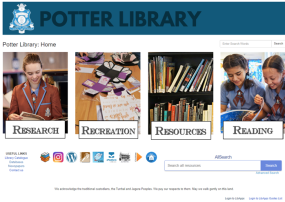
Our school is 163 years young (as of 2024) and we have been digitising Heritage material for over 10 years to increase access for staff and students. The advantage of using the same Library catalogue system is that the school community is familiar with the search interface. We tried a specific Archives software product originally, but moved to Oliver as the archives-specific product did not meet our needs - for example it did not allow uploading of video collections at the time. Using one software for both Library and Archives also means that Library and Archives staff can share expertise on using the catalogue software.
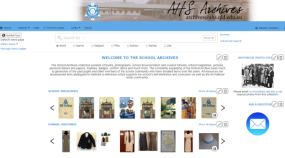
When we commenced this project, Archives staff worked with an external Archives expert to develop a Procedures Manual which included guidance on records management. Using Oliver to set up a catalogue for archival materials requires choosing fields which are searchable and renaming these using archival terms, rather than using standard Library terminology.
Security needs to be considered to ensure privacy of certain information. A second catalogue for Archives allowed better limiting of access to some information by using security settings in Oliver and via user roles which was not possible via our original setup using a separate branch in the main Library Oliver catalogue. There are many privacy issues with school historical digital collections, and the various legal requirements have guided many decisions relating to providing access to our heritage archives. With a separate catalogue, notes in Copies do not appear in OPAC searching for the Archives Catalogue for general users; only for archives staff.
Digitalising archive records assists with making historical resources accessible for research, shares historical resources, and assists in the preservation of originals. There is much to consider when beginning a digitalisation project:
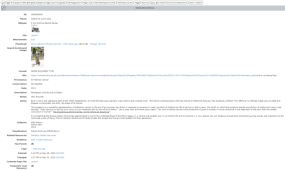
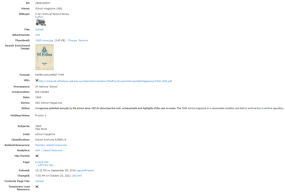
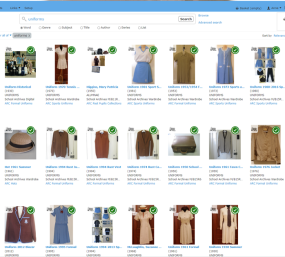
Management of heritage photos and videos is another big area to consider. We have just moved to School Bench as a photo repository. School Bench has facial recognition which will assist searching our thousands of school photographs. Our Archives staff in the past have had a process of selecting photos of key interest each year and Archives created a photo sub-collection on the school's Sharepoint. School bench also manages privacy – where parents have requested that photos of their child are not used.
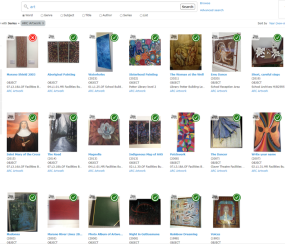
Another decision is where to save school-created videos of historical interest. We were using YouTube, for some of these historical videos, but now usually store them on the Microsoft equivalent of G Drive or on ClickView. The storage decision that is being made for School Archives digital resources going forward is significant due to the size of the collection and privacy issues. The Library uses SharePoint for linking resources to the Catalogue, but Archives has a higher privacy requirement. Even decisions on where to save Heritage video material is challenging. For example, YouTube has issues due to its values and ethos, but embeds in one click to play in OneNote, whereas ClickView does not; it takes the user out of OneNote. YouTube may block videos using commercial music used in the background. The new Microsoft Stream has been reviewed, and has a great auto transcript tool, but content is only accessible to internal staff and students. ClickView can provide links to share a video to internal users, or it can be set to share the video to anyone.
We have digitised all our school annuals, enrolment records, all school newsletters, biographies of school key persons and successful past pupils. We have very large heritage video collection, including format changes of VHS, and photographs that were originally on slides. It has been a massive project to scan and catalogue historical paper documents and print photos. We have 3D scans of school uniforms and areas of the school, including statues, have been scanned using the Polycam app and these tend to be stored on Sketchfab for sharing https://sketchfab.com/AllHallowsSchool (this location also includes student scans from History Curriculum studies).
Heritage Archives staff manage our school painting and artwork collection - this year they re-photographed the school's artwork, and rechecked locations and provenance information, and this information is catalogued. The school was recently lent a large First Nations' art collection, so this significantly increased this Art collection. Our Library and Archives catalogues are used as an alternative to asset registers for some resources.
Information skills used in Libraries can be applied to many collections; even Dance and Drama Costumes and Sheet Music, as well as School Archives, but that is another story… Research requests are emailed to Archives staff by the school community, and also sometimes the public, and these staff follow processes to implement privacy protocols around this information.
Contact our Archives staff at Archives@ahs.qld.edu.au